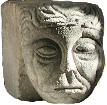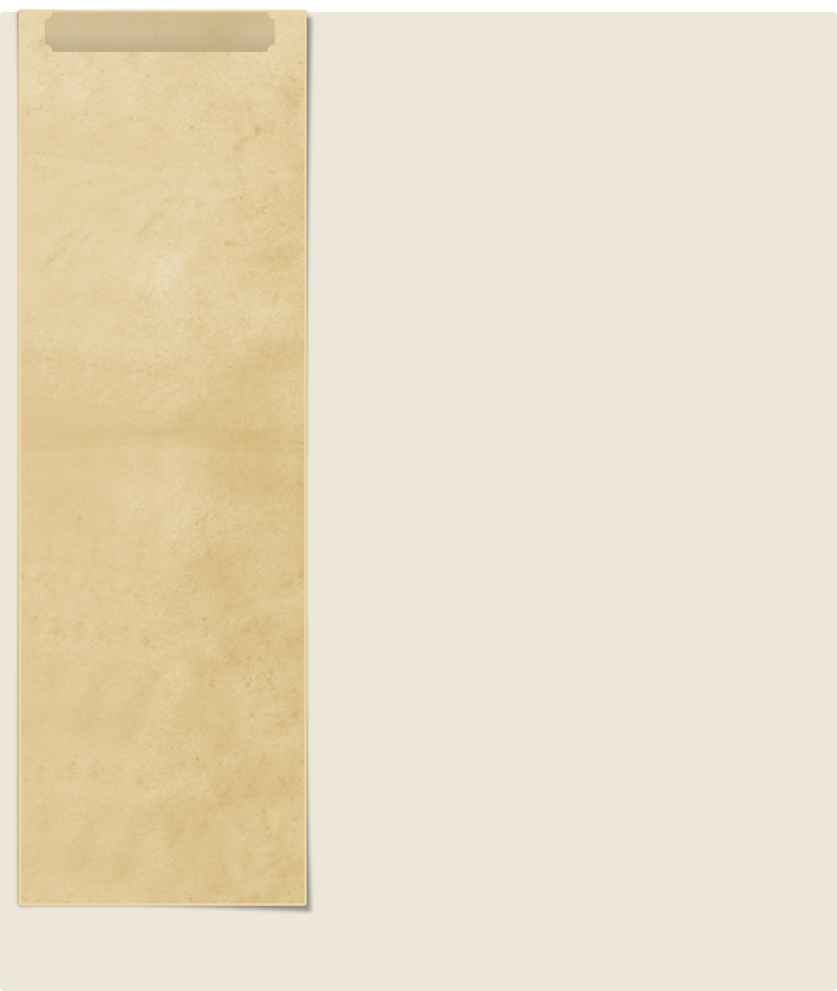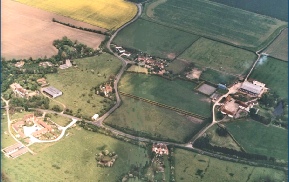




Webmaster Peter Chatterton



According to the English Place-Name Society the name Throckmorton Is derived from an Anglo-Saxon word "throc" meaning a drain. A.I..Rowse in his "Raleigh and the Throckmortons" renders this as "the farm by the frog-marsh". The name may come from the draining of a water-logged "moor" by digging the moat to the north-east of the church. This surrounds a site reputed to be that of the original manor house. There are other moats near the Court Farm (the half-timbered house to the south), which until 1972 was the last remaining holding of the Throckmorton family in the village from which they got their name.The earliest mention is in a charter of "Wulstan, called the Archbishop" 'referring to "three mansae" at Throckmorton. Wutstan was both Bishop of Worcester and Archbishop of York in about 1014 - 1020. The manor, along with Bishampton and about four-fifths of Worcestershire was held by the Bishops several of whom were also Archbishop of York, but needed the revenues from Worcester to keep up their estate in the less prosperous north. There are various other references to it during the Middle Ages; "Reoland Trokemardtune" was a juror for the Hundred of Oswaldslow in the mid 12th century; '"Henricus, Filius Johannis de Trockemertone" is granted half a hide which he claimed in Fladbury about 1200 .
The place and it’s name.
About us.
Little remains of the medieval village, apart from the Court Farm, which is a hall with cross-wing solar at the southern end, dating from the beginning of the 16th century. Church Farm retains a panel of wattle and daub construction inside and may once have had a similar plan but has been much altered. The south gable collapsed in the 1930s and was re-built in the style of the time. Lower Farm was possibly built in the 17th or 18th centuries but was given a Victorian frontage in the 1870s.
Tilesford Farm was also probably built in the 17th or 18th centuries and had a timbered barn at right angles to it (demolished in the 1970s). The remaining farm buildings date from the 19th century. In 1938 the farm became accommodation for the pilots training at Capt. Bunnings Flying School - interest in the use of the area as an aerodrome had started with a visit from Alan Cobham's Flying Circus in 1934. Tuition, Board & Lodging cost 2 guineas per week, according to "Flight" magazine. Flying took place from fields to the south of Long Lane.
Older cottages were sited outside the eastern wall of the churchyard; a row of timber and thatch, known as Pudding Row - convenient to the school; six more were on Long Lane by the entrance to the airfield but there are no photographs of these. One is described as having a beaten earth floor and thatch coming down within 5 feet of the ground.
There was one behind the sign-post to Bishampton, which housed the village shop and Post Office, others were further down the road to Hill & Moor, almost opposite the entrance to the Court. A pair of tiled cottages on the right and another group of timber & thatch further on, with a single thatched cottage on the left.
Pudding Row and the Post Office were demolished in 1937/38 when the Council Houses "The Elms" were built. The rest were destroyed in August 1940 to make way for Pershore Airfield. Eye-witnesses record that a wire hawser was put around the cottages and a tractor pulled them over. The resulting heap of timber and thatch was then burnt. Wheat was also burned in the fields, and plum trees uprooted, despite the grower having been promised 48 hours in which to pick his fruit. The occupants of the cottages were given 24 hours to get out and had to find accommodation where they could.
The Village
.Throkemerton" is listed in the Lay Subsidy Rolls in the time of Edward 1st. This was a tax levied on private property, goods and chattels - thirty five persons were liable for this tax in the village and paid in tota l6.19.8d. In Fladbury, by comparison, 81 persons paid 6.16.0d and in Evesham, 91 persons paid 45.3. Id At about the same time, the "Red Book" of Worcester gives land values in the village as 6d per acre for arable, 24d per acre for meadow .Pasture was 4d per acre but none was recorded .Historic relics are few. The only early coin found in the parish so far is a silver penny of Edward 1.
Throckmorton as it is now.
Throckmorton has just a church and a Village Hall, the church has two services per month the 2nd and last Sunday of the month, it is lit by oil lamps and candles the pipe organ is powered by a generator. There is parking either side of the driveway and in a small grass car park next to the church. Although when to wet parking is best on the road.
The Village Hall is for hire and is used for various activities and functions. It has a small car park behind with access off Long Lane. It is used by local and people and groups from outside the area. It always seems to be well liked it being modern and light and well equipped
A full description can be found here..

Back to top
| The Church |
| The Village Hall |
| Throckmorton Family |
| Archaeology |